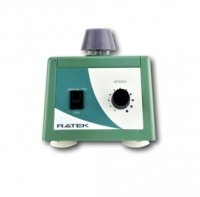When to Use (and When Not to Use) a Non-Contact Thermometer
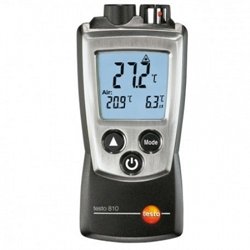
Non-contact thermometers take rapid measurements of surface temperatures. Their combined speed and ease of use make them invaluable tools for HVAC, manufacturing, and foodservice industries (to name a few). There are times when using a non-contact thermometer is ideal; BUT – you need to be aware of several important exceptions.
This article explains the right situations to use a non-contact thermometer and some limitations when performing temperature measurements.
Why Use a Non-Contact Thermometer
Non-contact thermometers are handy tools for taking surface temperature measurements from a distance. They can provide accurate measurements without ever having to touch the item you wish to measure. Six reasons to use a non-contact thermometer over a probe thermometer include:
- Hazard Prevention
A non-contact thermometer is an ideal tool to measure the surface of an item that is too dangerous to touch. Examples include; extremely high-temperature surfaces or machine parts. - Measuring Solid Objects
Use a non-contact thermometer when items are entirely impenetrable, and a probe thermometer would not work. Examples include measuring frozen food. - Checking Fragile Items
A non-contact thermometer is suitable when touching the item might cause it to become damaged or break. Examples include; computer circuitry. - Measuring Out of Reach Surfaces
Use a non-contact thermometer over a probe thermometer when you need to know the temperature of surfaces that are too high or simply out of reach. Examples include air conditioning outlets and tight spaces. - Sterile Environments
A non-contact thermometer is perfect for measuring the surface temperature of any items susceptible to contamination—for example, surfaces in laboratories and processed foods. - Moving Parts
Moving machinery parts are prime candidates for non-contact thermometer measurement as temperatures can be assessed without stopping work. Examples include measuring moving conveyor belts, elevators and gears.
Limitations of Non-Contact Thermometers
With all the great examples of use for non-contact thermometers listed about you might be thinking, “Why would I ever need any other type of thermometer?”. Although non-contact thermometers are fantastic in some applications - they do have some drawbacks. Our scientists list five critical limitations of non-contact thermometers below.
- Non-contact thermometers are great for checking surface temperature; however, they do not measure the internal temperature of an object.
- Non-contact thermometers require adjustments when measuring particular objects and materials, such as shiny and reflective objects. For more information on emissivity, read our article “ How do non-contact thermometers work?”.
- Non-contact thermometer measurements can be impacted by moisture, dust, fog, smoke or other particles in the air.
- Non-contact thermometers need time to acclimatise after rapid changes in ambient temperature.
- Non-contact thermometers do not “see-through” glass, liquids or other transparent surfaces—even though the visible laser pointer light might pass through them. So, if you try to point a non-contact thermometer at a window, you will measure the window’s glass, not the outside temperature.
Non-Contact Thermometer Product Examples

Testo 810 2in1 IR thermometer
|
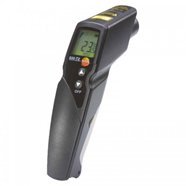
Testo 830-T2, 2 Laser Point InfraRed (IR) Thermometer
|

FLUKE 62 MAX IR Thermometer
|
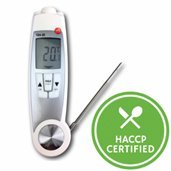
Waterproof Infrared & Probe Thermometer
|
Conclusion
A non-contact thermometer is an excellent measuring tool for a range of applications. However, it is essential to know the limitations of non-contact thermometers to ensure accurate results.
If you need help finding the best thermometer for your needs, speak with an Instrument Choice Scientist! Call 1300 737 871 or email [email protected].
Also interesting
A standard ceramic reference junction in a soil pH tester's electrode can quickly become clogged when measuring samples with high suspended solids concentrations. The IC-HI981030 Groline Soil pH Tester features an open reference junction with a removable sleeve design to counteract this potential problem.
While the Groline Soil pH Tester's unique open gel interface between the sample and internal reference minimises the risk of junction blockage, if any soil enters the junction, it can easily be cleaned and refreshed using more bridge electrolyte solution.
This quick video guide details replacing and filling the electrolyte solution in a Groline Soil pH Tester. See the demonstration here
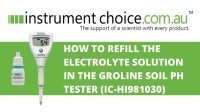
The Instrument Choice team of scientists regularly reviews new and popular products, so you can make more informed decisions when searching for the perfect scientific instrument for your application.
This edition reviews the VM1 Personal Vortex Mixer by Ratek, a highly durable and straightforward single tube vortex mixer that offers unbeatable reliability.
Get our scientists’ review of the VM1 Ratek Personal Vortex Mixer
